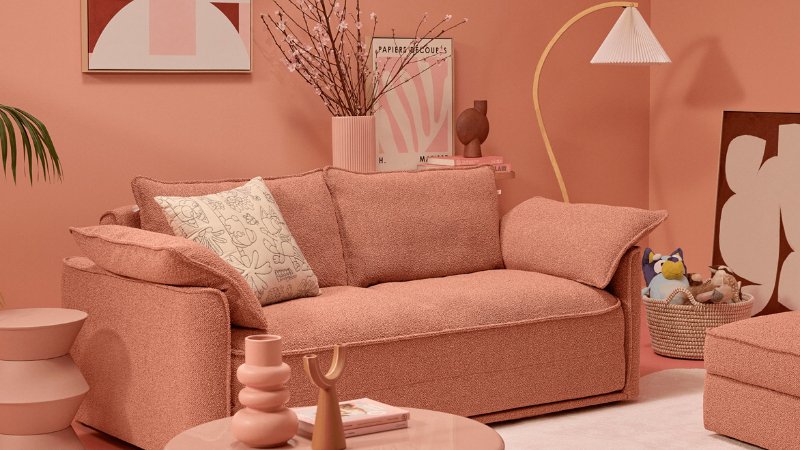If your studio apartment feels more like a storage unit than a sanctuary, you’re not alone. Apartments are getting smaller; the average size has decreased by 54 square feet in the last decade alone. This means many of us are learning to do more with less, often without a renovation budget, especially when dealing with small spaces that require smarter design choices.
The good news is you don’t need to knock down walls to create more breathing room. A few strategic furniture swaps, smarter storage habits, and visual tricks can reclaim your space in just a weekend. Below are three design-forward approaches you can put into action right away.
Embrace Multifunctional Furniture
The core principle of small-space design is making every item work harder. One piece of furniture that serves multiple purposes instantly frees up valuable floor space that would otherwise be occupied by a second item. This approach reduces clutter and enhances the functionality of any room.
In smaller spaces, functionality is key. Prioritize items that perform double duty, such as lift-top coffee tables or multipurpose ottomans. A high-quality convertible sleeper can completely redefine a room’s potential, shifting from a lounge to a guest suite with ease. Designs like Koala’s stylish and comfy sofa bed prove that you can have a compact footprint perfect for daily living while still prioritizing aesthetics.
Swapping a bulky three-seater and a separate guest mattress for one convertible unit can free up significant floor space. This newly liberated area can then host a slim console table or a small reading nook, adding function without clutter.
Furniture that shows a bit of leg also visually lifts pieces off the floor, tricking the eye into perceiving more square footage.
| Key Insight: In small spaces, every piece of furniture must earn its footprint. If an item doesn’t fold, stack, store, or transform, it may be taking up more space than it’s worth. |
Master Hidden & Vertical Storage
Clutter poses a significant threat to small spaces, necessitating a more strategic approach to storage. This means using overlooked areas and thinking vertically to get items off the floor and out of sight. Think of storage as a layering game using under-bed bins, lidded baskets on top of kitchen cupboards, and drawers tucked under stairs.
Your home’s vertical real estate is often its most under-utilized asset. Mount a pegboard over a desk for tools and supplies, or add floating shelves that run wall-to-wall just below the ceiling. Even bulky gear deserves elevation; ceiling-mounted bike racks and wall-hung TVs instantly erase the need for bulky entertainment units.
Freestanding armoires or low-profile sideboards can rescue rooms that lack built-in storage. For bulky seasonal items like heavy blankets, use vacuum-seal bags to create flat packs. These can then slide easily under a bed or sofa, staying out of sight until needed.
Don’t forget to manage the “invisible” clutter from electronics. Use cable-management boxes and adhesive cord clips to hide router and TV wires. A floor clear of tangled cords instantly makes a tight room feel more organized and spacious.
| Pro Tip: Hidden storage is only effective if it’s organized. Use clear bins and descriptive labels to avoid turning valuable under-bed space into a chaotic ‘junk drawer’ you can’t find anything in. |
Use Visual & Layout Illusions to Open Up Space
You don’t need a renovation budget to make a room feel larger. Smart styling tricks and simple layout adjustments can manipulate perception, creating an illusion of depth, height, and openness. Pushing every piece of furniture against the wall might seem logical, but it often makes a room feel cramped.
Instead, try “floating” your sofa just a few inches off the wall and anchor the area with a slim rug. Rooms also feel bigger when the ceiling appears higher. An easy trick is to install curtain rods 10–15 centimeters above the window frame and let the drapes skim the floor, which draws the eye upward.
Light, cool colors such as pale greys, breezy blues, or soft whites are excellent for small spaces because they reflect light. Complement this color palette with rounded furniture edges, like an oval coffee table or a curved floor lamp. These soft shapes remove hard visual stops, allowing the eye to glide uninterrupted around the space.
Maximize every bit of daylight by keeping windowsills clear of clutter and using mirrors strategically. Placing a large mirror opposite a light source can bounce brightness deeper into the room. This makes it feel more airy and open, and can even double the perceived depth of a narrow entryway.
| Key Insight: Pushing furniture against the walls is a common mistake that can actually make a room feel smaller. ‘Floating’ your sofa just a few inches away creates breathing room and an illusion of spaciousness. |
Your Next Steps
Ready to reclaim some precious space? Start this weekend by picking one multifunctional upgrade, like replacing a coffee table with storage ottomans or researching a wall-mounted desk.
Next, tackle a single storage project, such as labeling your under-bed bins or hanging floating shelves. Finally, try one simple visual tweak, like floating your sofa off the wall or raising a curtain rod to create an illusion of height.
